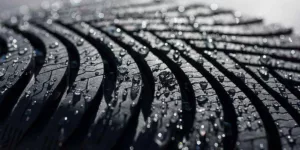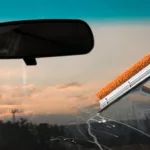Winter tyres ensure safer driving in the harshest weather conditions of the winter season: snow, ice, mud, rain and low temperatures. Although commonly known as “snow tyres”, they really should be called “winter tyres”, because in any weather condition, simply with the temperature being lower than 7ºC, the performance is higher than that of ordinary tyres. When choosing them, you must take into account various aspects related to tread pattern and chemical composition.
You should be aware of that in general; winter tyres offer optimal performance in winter temperatures. However, some brands make snow tyres that can also be used in summer, since they are resistant to high temperatures and provide excellent grip in all weather conditions. Such is the case with Michelin Cross Climate tyres, which feature the relevant certifications to circulate in winter and summer. You can find the advantages and disadvantages (if any) of a lot of winter tyres by searching online.
Characteristics of winter tyres
Snow tyres are distinguished from standard tyres by the type of drawing and chemical composition of the tread. The objective is to increase the grip of the tire on the ground in cold and snowy winter conditions. The difference between both types of tyres (standard and winter) is remarkable if we consider the braking distance and the traction capacity when accelerating.
• Depth and design of the drawing:
To improve the adherence to the floor, the evacuation channels between the blocks of the drawing are much more marked and wide. In fact, the tread pattern is deeper, approximately two millimeters larger than that of standard tyres. This increases the efficiency with which the tire evacuates water or snow. The tread has two wear indicators, the first at 4 millimeters deep, which indicates the need to change the tyre for a new one. However, that tire can continue to be used in summer, until reaching the second wear indicator, located at 1.6 millimeters deep. This type has tacos grooved by numerous self-locking lamellas in order to increase the grip on sliding floors, whether wet leaf, ice or snow. The lamellae open and close as the wheel rotates, so that they pinch the snowy or frozen ground. This is called a caterpillar effect and it is what increases adhesion.
• Chemical composition of the tread:
The winter tyres are made with a softer and more flexible rubber, designed to preserve its performance at low temperatures, below 7 ºC. In the case of standard tyres, at that temperature the rubber begins to harden and, therefore, loses grip on the ground.
Which tyres to choose for snow: practical advice to know
When choosing snow tyres, the first thing you should do is read your car manual to find out what type of winter tyre the manufacturer recommends, the measurements and the technical sheet. In the event that the tire size of the standard tyres is not compatible with the winter ones, you will have to resort to two sets of different tyres. If so, consider buying narrow winter tyres, since they offer a better track effect by having a longer footprint than wide tyres. One of the determining characteristics of a good tyre for snow is related to the design of the drawing. This should extend along the side of the tread to offer a maximum effective grip in case the wheel sinks in the snow. Also, remember to verify that the tire studs have the corresponding lamellae.
Winter tyres must meet a series of strict requirements to offer the indicated services. Therefore, be very careful when choosing snow tyres and do not let yourself be carried away by the great offers: you will run the risk of buying an old tire that does not respond adequately to adverse weather conditions. Winter tyres expire after four years of manufacture. Last, but not least, you should know that tyres for driving in snow do not require the installation of chains, so we save money by not having to buy them, time and trouble to assemble and disassemble and, above all , we gain in driving comfort.
By reading this article thoroughly we hope you can prepare yourself better before choosing your winter tyres that are most suitable for all your needs and expectations.








